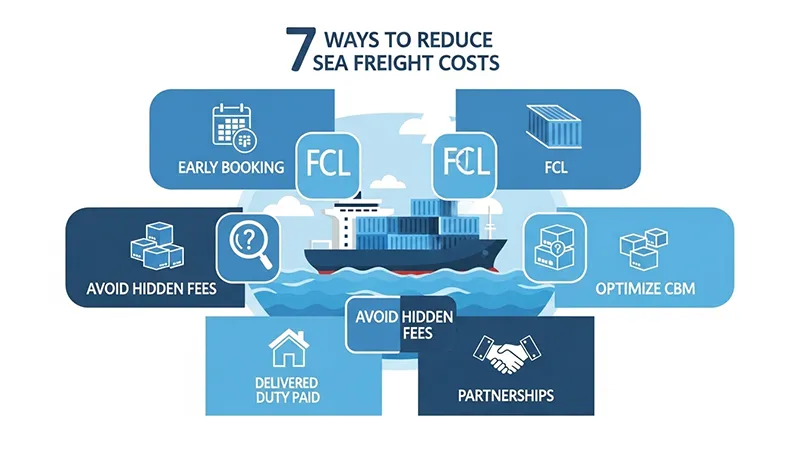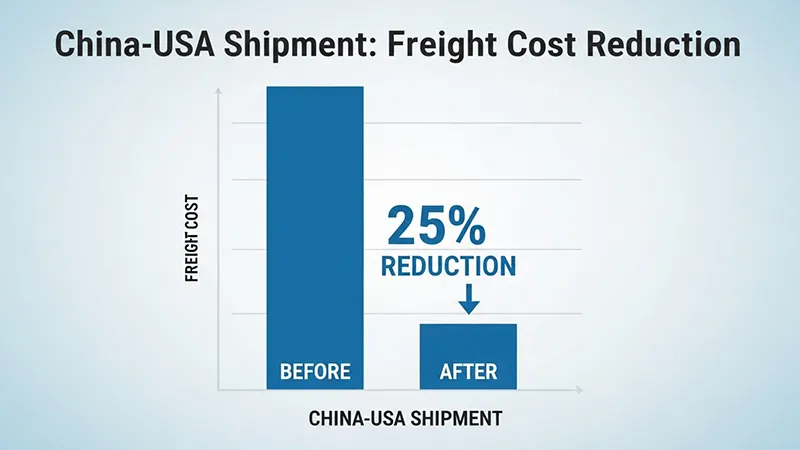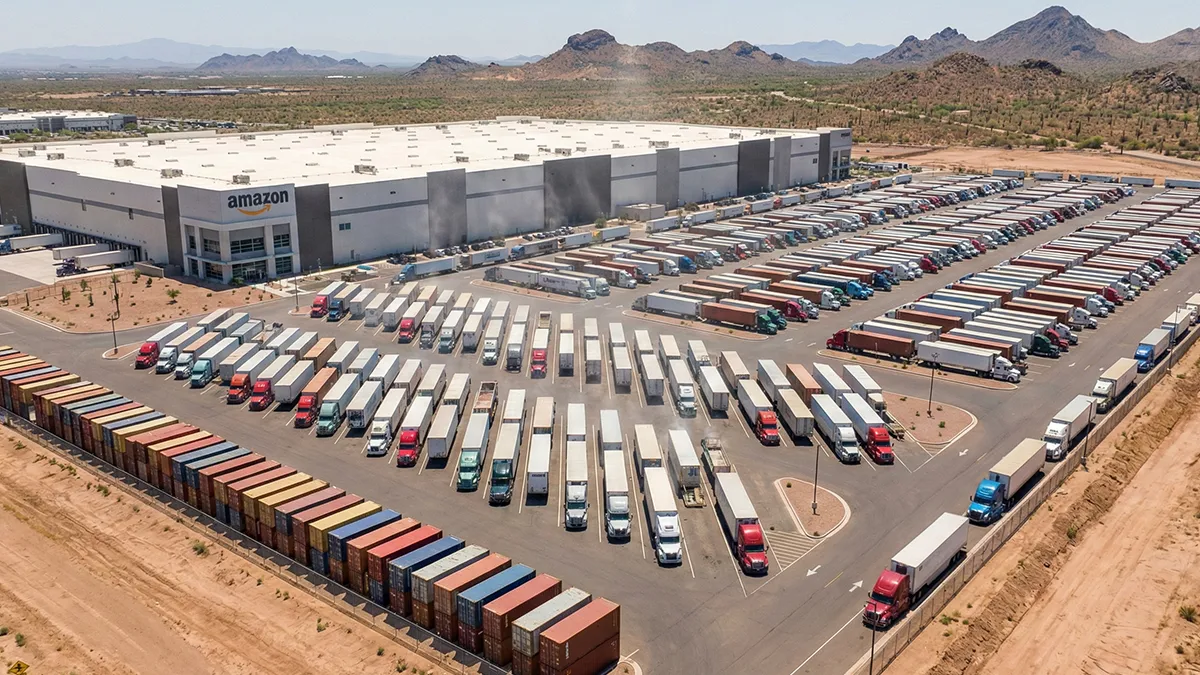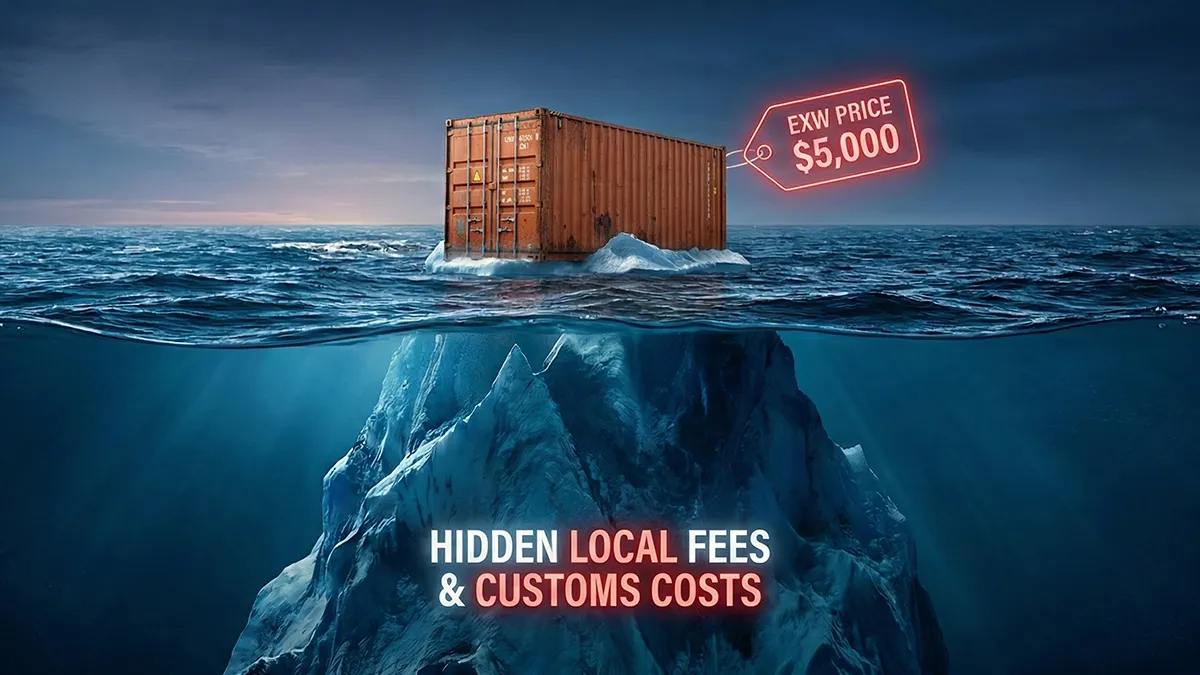How to Reduce Sea Freight Costs from China to USA
The Rising Cost of Sea Freight
Sea freight is the backbone of global trade — nearly 90% of all goods worldwide move by ocean containers.
For importers shipping from China to the USA, rising sea freight costs have become one of the most pressing challenges.
Definition:
Sea freight cost refers to the total charge for transporting goods by ocean, including base shipping rates, fuel surcharges, terminal handling, documentation, and inland drayage fees.
Understanding these factors — and knowing how to manage them — can help you reduce costs by up to 30% without compromising delivery time or reliability.
At Zbao Logistics, we’ve helped hundreds of Amazon FBA sellers and B2B importers streamline their shipping operations. In this guide, we’ll share seven practical, proven ways to reduce sea freight costs from China to the USA.
Why Sea Freight Costs Have Increased in Recent Years
Before you can reduce shipping costs, it’s crucial to understand why rates fluctuate.
Here are the major cost drivers behind container shipping prices today:
| Factor | Explanation | Impact on Cost |
|---|---|---|
| Fuel Surcharge (BAF) | Linked to global oil prices and carrier fuel consumption. | +10–15% |
| Port Congestion | Extended waiting time at ports like LA, NY, and Houston. | +$300–$600 per container |
| Peak Season Surcharges | August–November & Jan–Feb (pre-CNY). | +20–40% |
| Container Imbalance | Lack of empties in China after heavy export seasons. | +$200–$400 |
| Drayage & Handling | Local pre-pull, chassis split, and terminal fees. | +$100–$250 |
💡 Tip: Many of these are avoidable through better scheduling, consolidation, and proactive coordination — which we’ll cover below.

1. Book Early and Avoid Peak Season
The easiest way to lower your sea freight cost is simple: plan ahead.
Late bookings force you into higher rates and limited space.
We recommend booking 2–3 weeks before the estimated time of departure (ETD), especially around Chinese holidays:
| Holiday | Duration | Recommendation |
|---|---|---|
| Chinese New Year | ~3 weeks (Jan–Feb) | Avoid shipping; book 1 month earlier |
| National Holiday | Oct 1–7 | Confirm space 2 weeks in advance |
Booking early gives you access to lower base rates, stable schedules, and reduced demurrage risk.
When you rush shipments, carriers charge premium “priority” surcharges — sometimes up to 25% more.
2. Choose the Right Mode: FCL vs LCL
Your choice between FCL (Full Container Load) and LCL (Less than Container Load) can make or break your cost efficiency.
| Mode | Best For | Cost Efficiency | Notes |
|---|---|---|---|
| FCL | Cargo >20 CBM | ⭐ Lower cost per unit | Fewer handling fees |
| LCL | Cargo <15 CBM | ⚠️ Higher cost per CBM | More handling, less stable |
Whenever possible, consolidate and ship FCL.
You’ll save on container freight charges, reduce the chance of cargo damage, and avoid unpredictable LCL surcharges.
👉 Learn more: FCL vs LCL Shipping Guide
3. Consolidate Multiple Shipments
If you have multiple suppliers across China, freight consolidation can significantly reduce your container transport cost.
At Zbao Logistics, we operate consolidation warehouses in Shenzhen, Ningbo, and Shanghai to help importers combine shipments before export.
Example:
A U.S. Amazon FBA seller sourced goods from three suppliers. Instead of shipping three LCL loads, we combined them into one FCL.
Result: Shipping cost dropped 28%, delivery time shortened by 7 days, and customs clearance was simplified.
👉 Read more: What Is Freight Consolidation and How It Benefits You
4. Avoid Hidden Fees: Demurrage, Detention & Chassis Split
Many importers overlook the hidden costs in container shipping. These can add hundreds to your final bill if not managed properly.
Common Hidden Charges
-
Demurrage: When the container stays too long at the port before pickup.
-
Detention: When the container isn’t returned to the carrier within the free time.
-
Chassis Split Fee: When the container and chassis are stored at separate yards, requiring two drayage trips.
✅ How to Avoid Them:
-
Book pre-pull trucking to move containers from port to a nearby yard before the free time expires.
-
Coordinate delivery appointments in advance.
-
Work with a forwarder who tracks free time limits in real-time.
👉 Learn more:
5. Optimize Container Loading and CBM Utilization
Every centimeter in a container costs money.
Poor packing means you’re literally paying to ship air.
Optimization Checklist:
-
Use standard pallet sizes (120×100cm) to fit container width perfectly.
-
Stack boxes to full height without exceeding 1.8m for safe handling.
-
Use carton design software or layout tools to maximize space.
-
Remove unnecessary inner packaging or empty voids.
💡 Pro Tip: Improving CBM utilization by just 5% can reduce your sea freight cost per container by over $200.
6. Partner with a Local China-Based Freight Forwarder
Working with a freight forwarder in China (like Zbao Logistics) gives you a powerful cost advantage:
you’ll get lower local handling fees, faster communication, and better carrier rates.
We provide:
-
Factory pickup across major production zones.
-
Real-time shipment tracking.
-
DDP/DDU shipping to Amazon FBA and 3PL warehouses.
-
Free cargo insurance for new clients.
Unlike overseas brokers, local forwarders know the true port fees and carrier schedules — allowing you to reduce unnecessary markups from intermediaries.
7. Use DDP or Door-to-Door Shipping for Cost Clarity
When importing to the USA, DDP (Delivered Duty Paid) shipping gives you full cost transparency.
Instead of paying separate invoices for ocean freight, customs, and delivery, DDP combines everything into one price — covering:
-
Customs declaration and ISF filing
-
Duties, taxes, and MPF fees
-
Inland trucking to warehouse or Amazon FBA
This approach simplifies your supply chain and prevents surprise charges.
👉 Learn more: DDP Shipping from China to USA
Case Study: How Zbao Helped a Client Cut 25%

Client: U.S. Amazon FBA Seller
Route: Shenzhen → Los Angeles
Cargo: 40HQ container (25 CBM electronics)
| Metric | Before Zbao | After Zbao Plan |
|---|---|---|
| Mode | LCL × 3 | Consolidated FCL |
| Total Freight | $4,980 | $3,720 |
| Delivery Time | 35 days | 27 days |
| Cost Savings | — | 25% reduction |
By consolidating shipments and booking pre-pull service, this client avoided demurrage fees and reduced delivery time by over a week.
Long-Term Freight Cost Reduction Strategies
To achieve sustainable savings beyond a single shipment, apply these long-term tactics:
-
Negotiate annual rates with carriers during off-peak seasons.
-
Use Free Trade Zones (FTZs) to defer duty payments and improve cash flow (CBP FTZ Program).
-
Analyze cost per CBM rather than per shipment for clearer performance tracking.
-
Adopt digital tracking tools to monitor congestion and optimize routing.
-
Build long-term relationships with your freight forwarder for better pricing leverage.
Frequently Asked Questions
1. How much does sea freight cost from China to the USA?
Generally, rates range from $1,400 to $2,000 per 40HQ, depending on season, route, and port. Use a sea freight cost calculator for precise estimates.
2. Is sea freight cheaper than air freight?
Yes — ocean shipping costs are typically 70–80% lower than air freight for the same cargo volume.
3. How can I avoid demurrage and detention fees?
Book early, ensure customs documents are ready, and consider pre-pull trucking to move containers off the terminal before the free time expires.
4. How can I get the lowest rate from China?
Compare multiple forwarders, consolidate cargo into FCL, and partner with a local China forwarder who offers DDP shipping to avoid hidden U.S. fees.
Conclusion: Smarter Planning = Lower Sea Freight Costs
Reducing sea freight cost from China to the USA isn’t just about chasing cheaper rates — it’s about strategic management and partnership.
From smarter booking and cargo consolidation to transparent DDP shipping, the savings can be substantial.
At Zbao Logistics, we combine local expertise in China with global shipping networks to help importers ship smarter, faster, and cheaper.


